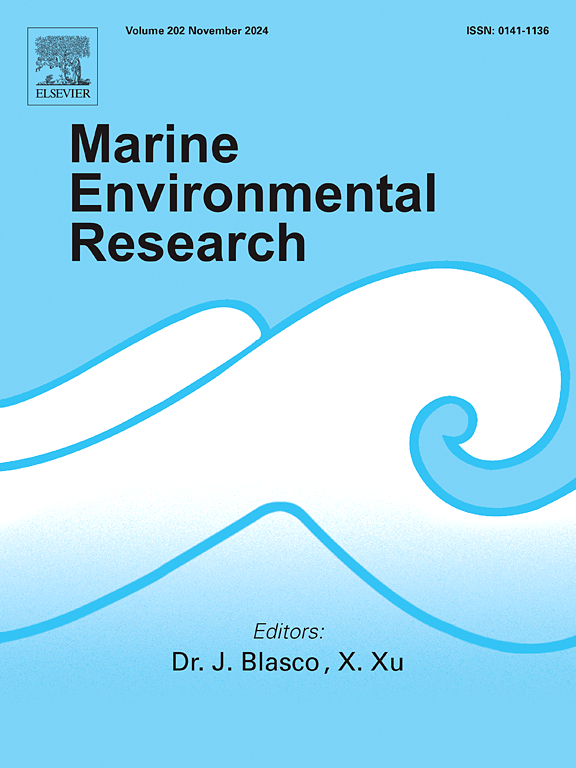The potential contribution of microbial communities to carbon fixation and nitrogen cycle in the Eastern Indian Ocean
IF 3
3区 环境科学与生态学
Q2 ENVIRONMENTAL SCIENCES
引用次数: 0
Abstract
This study investigated the diversity and metabolic potential of microbial communities in the Eastern Indian Ocean (EIO) through 16S rDNA gene sequencing and metagenomics analyses. Water samples were collected from the surface waters (5 m depth) and 150 m depth layer in the EIO between March 20th and June 6th, 2019. This study reveals microbial-driven biogeochemical dynamics in the oligotrophic Eastern Indian Ocean, where vertically stratified communities (Cyanobacteria/Proteobacteria-dominated surface vs. diversified Proteobacteria at 150 m) and latitudinal diversity gradients reflect nutrient limitations. Metagenomics identified four carbon fixation strategies: the Calvin cycle dominated epipelagic CO2 assimilation, while the 3-hydroxypropionate bicycle showed elevated surface activity, alongside reductive citrate and Wood-Ljungdahl pathways involving novel Actinobacteria. Nitrogen cycling exhibited spatial heterogeneity: nifH-dominated nitrogen fixation in the surface waters, prevalent narGHI nitrate reduction, and divergent nirS/nirK/nosZ distributions tied to nutrient gradients. Proteobacteria and Actinobacteria were key nitrogen fixers, with novel Actinobacteriota diazotrophs expanding known diversity. Elevated nosZ abundance in the Bay of Bengal underscored regional nitrous oxide consumption hotspots. These findings underscore microbial mediation of carbon-nitrogen fluxes in oligotrophic systems, providing genomic insights into ecosystem responses to climate-driven ocean changes.
求助全文
约1分钟内获得全文
求助全文
来源期刊

Marine environmental research
环境科学-毒理学
CiteScore
5.90
自引率
3.00%
发文量
217
审稿时长
46 days
期刊介绍:
Marine Environmental Research publishes original research papers on chemical, physical, and biological interactions in the oceans and coastal waters. The journal serves as a forum for new information on biology, chemistry, and toxicology and syntheses that advance understanding of marine environmental processes.
Submission of multidisciplinary studies is encouraged. Studies that utilize experimental approaches to clarify the roles of anthropogenic and natural causes of changes in marine ecosystems are especially welcome, as are those studies that represent new developments of a theoretical or conceptual aspect of marine science. All papers published in this journal are reviewed by qualified peers prior to acceptance and publication. Examples of topics considered to be appropriate for the journal include, but are not limited to, the following:
– The extent, persistence, and consequences of change and the recovery from such change in natural marine systems
– The biochemical, physiological, and ecological consequences of contaminants to marine organisms and ecosystems
– The biogeochemistry of naturally occurring and anthropogenic substances
– Models that describe and predict the above processes
– Monitoring studies, to the extent that their results provide new information on functional processes
– Methodological papers describing improved quantitative techniques for the marine sciences.
 求助内容:
求助内容: 应助结果提醒方式:
应助结果提醒方式:


